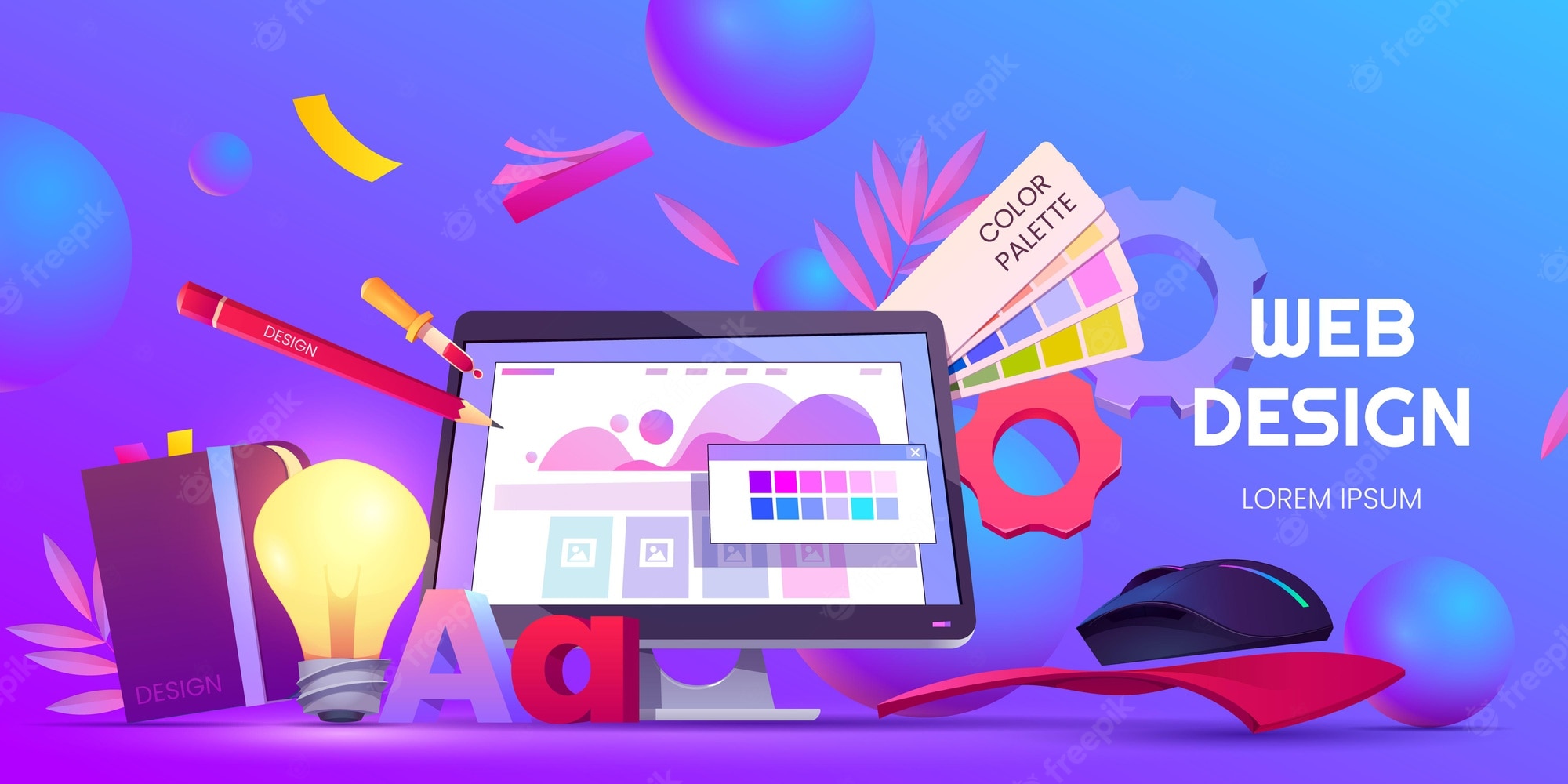The Value of User Experience in Effective Web Design Methods
User experience (UX) serves as a cornerstone in efficient web design strategies. It shapes exactly how users engage with a site, affecting their satisfaction and chance of returning. A properly designed UX can boost interaction through instinctive navigation and receptive designs. However, neglecting these elements might cause stress and boosted bounce prices. Recognizing the intricacies of UX is essential for developers intending to produce compelling electronic experiences that reverberate with diverse audiences. What factors absolutely drive effective user engagement?
Recognizing User Experience and Its Impact on Layout
User experience (UX) is frequently perceived as a plain facet of web design, it essentially forms how customers interact with a website. UX incorporates all aspects of the user's interaction, consisting of functionality, accessibility, and total complete satisfaction. A positive UX cultivates involvement, encouraging customers to explore the site and return in the future. On the other hand, an unfavorable experience can bring about irritation, leading to high bounce prices and lost opportunities for conversion.
Layout aspects like navigation, content, and format company play important functions fit this experience. Effective UX layout prepares for user requirements and preferences, ensuring that info is aesthetically enticing and quickly available. Furthermore, comprehending user behavior through analytics can provide important understandings, notifying layout decisions that enhance use. Inevitably, a thorough understanding of UX permits developers to produce web sites that not just attract customers yet likewise advertise meaningful interactions that line up with organization goals and user assumptions.
Secret Principles of Efficient User Experience
Effective user experience depends upon a number of essential principles that boost web site capability and involvement. Instinctive navigation design, responsive layout essentials, and the importance of visual pecking order are essential aspects that contribute to a smooth communication in between users and web content. Understanding these principles enables developers to produce more accessible and user-friendly electronic settings.
Instinctive Navigation Style
When individuals come across a website, intuitive navigating design works as a vital portal to their total experience. Efficient navigation permits customers to easily situate the info they look for, boosting their communication with the website. Secret concepts include clear labeling, logical organization, and regular positioning of navigating components. Labels need to be uncomplicated, enabling customers to forecast the content they will certainly find. A well-structured pecking order aids individuals recognize the relationship between various sections, leading them with the website flawlessly. Furthermore, receptive food selections and easily accessible links contribute to a liquid experience across devices. By prioritizing user-friendly navigation, developers can substantially reduce user disappointment and boost engagement, inevitably cultivating a positive understanding of the website and its web content.
Responsive Format Basics
A well-structured navigation system normally brings about the demand for a receptive layout, which is essential in today's diverse digital landscape. A receptive layout warranties that websites function flawlessly throughout various gadgets, including desktop computers, smart devices, and tablet computers. This adaptability enhances user experience by enabling web content to be conveniently available and aesthetically systematic, no matter of screen size. Key concepts of responsive style include fluid grids, versatile pictures, and media queries, which assist in perfect watching. Additionally, focusing on touch-friendly aspects improves interaction on mobile gadgets. By applying a receptive design, designers can fit individuals' needs, reduce bounce prices, and boost engagement. Eventually, a well-executed receptive design fosters a positive user experience, motivating site visitors to explore the website further.
Visual Hierarchy Significance
Aesthetic power structure plays a vital function in guiding users via a website, making sure that vital details records their attention initially. By purposefully making use of dimension, color, comparison, and spacing, designers can create a clear path for individuals to comply with. Bigger components usually draw the eye, suggesting their importance, while contrasting shades can highlight phone call to activity. Furthermore, consistent alignment and collection of associated web content improve comprehension, making navigating user-friendly. Reliable usage of aesthetic pecking order not just enhances use yet additionally supports the total visual of the website, cultivating a positive user experience. When users can quickly recognize one of the most essential details, they are more probable to involve with the web content, causing boosted contentment and interaction with the site.
The Role of Use in Web Design
Usability plays a vital duty in web design, specifically with navigating simplicity and adherence to ease of access requirements. Reliable navigating improves user complete satisfaction by allowing visitors to find information promptly and without effort. Conference accessibility requirements assures that all individuals, regardless of their capabilities, can properly connect with the site.
Navigation Simpleness
Simpleness in navigating stands as a foundation of efficient web design, considerably affecting user experience. A structured navigating system permits customers to locate info swiftly and with ease, decreasing stress and enhancing complete satisfaction. Clear labeling and sensible structure are crucial components, guiding customers effortlessly via the site. Repetitive links or extremely complicated food selections can disorient customers, leading to increased bounce prices. In addition, mobile responsiveness has to be considered, guaranteeing navigating remains simple across gadgets. Reducing and prioritizing crucial pages mess even more supports user engagement. Reliable navigation not just fosters a favorable experience however also encourages users to discover the site better, ultimately resulting in greater conversion prices. Hereof, navigating simpleness functions as a crucial variable in the total efficiency of web design techniques.
Access Requirements
User engagement is considerably improved when web sites stick to availability standards, ensuring that all users, regardless of their capacities, can navigate and engage effectively. Conformity with these standards not just expands the target market however also boosts general user satisfaction. Available design includes functions such as text alternatives for photos, keyboard navigating, and adequate shade comparison, which help with usage by individuals with disabilities. On top of that, applying these requirements can favorably affect seo (SEARCH ENGINE OPTIMIZATION) by boosting site structure and clarity. As web design evolves, prioritizing ease of access becomes important in fostering an inclusive electronic environment. By embracing these standards, designers add to a much more fair net, inevitably driving user loyalty and engagement.
Value of Responsive Layout for User Engagement
As customers increasingly accessibility internet sites via a selection of devices, the relevance of receptive design ends up being paramount for engaging customers effectively. Responsive design guarantees that an internet site adapts flawlessly to various screen dimensions, providing an excellent viewing experience no matter of the device made use of. This versatility improves user engagement by facilitating simpler navigating and interaction with content.
When individuals experience a site that is receptive, they are more probable to remain much longer, check out further, and return in the future. A well-designed responsive layout reduces the frustration typically connected with zooming and scrolling on smaller sized screens, therefore decreasing bounce rates. In addition, receptive layout can favorably impact online search engine positions, as online search engine prioritize mobile-friendly internet sites. In today's digital landscape, where mobile use continues to climb, applying responsive style is not simply advantageous, but important for maintaining user engagement and ensuring a favorable experience throughout all tools.
Enhancing Load Times for Better User Satisfaction

To boost tons times, internet developers must focus on maximizing photos, leveraging internet browser caching, and minimizing HTTP requests. In addition, utilizing Material Distribution Networks (CDNs) can quicken material shipment by dispersing it throughout various geographic areas. Enhancing code, such as compressing CSS and JavaScript files, further adds to faster packing speeds.
Ultimately, a commitment to enhancing load times not just boosts user contentment but additionally reinforces brand commitment and enhances the likelihood of repeat visits. A swift, smooth experience is necessary for keeping customers and cultivating positive interactions.
The Influence of Visual Pecking Order on User Interaction
Visual pecking order functions as an essential element in assisting user interaction on a site. By arranging material in a means that prioritizes info aesthetically, developers can affect exactly how customers browse and involve with a website. This power structure is established via different design techniques, consisting of dimension, shade, spacing, and comparison. As an example, bigger font styles or strong shades draw attention to vital aspects, such as phone call to activity or headlines, while suppressed shades and smaller fonts can show secondary info.
Efficient aesthetic hierarchy assists customers promptly recognize what is most essential, lowering cognitive lots and enhancing usability. It permits intuitive navigation, making it less complicated for individuals to locate what they need without stress. As users interact with a website, a well-structured aesthetic pecking order promotes a more rewarding experience, ultimately resulting in higher involvement and conversion prices. Designers need to prioritize these concepts to develop an user-centered and reliable internet setting.
Determining User Experience: Techniques and tools

Often Asked Questions
How Can I Improve My Internet site's User Experience on a Budget?
To improve a web site's user experience on a spending plan, one can maximize page tons speed, streamline navigating, execute responsive layout, boost material clearness, and gather user comments for continuous improvements, guaranteeing an enjoyable visitor experience.
What Are Usual User Experience Blunders to Prevent in Web Design?
Common user experience errors in web design include chaotic formats, poor navigating, sluggish loading times, lack of mobile responsiveness, ignoring ease of access, inconsistent branding, and stopping working to prioritize user responses - agency for web design. Each can significantly hinder total site performance
Exactly how Often Should I Update My Website for Better User Experience?
Web sites should be updated frequently, ideally every couple of months, to preserve ideal user experience. Frequent updates help address usability problems, rejuvenate web content, and adapt to altering user requirements, making certain the website continues to be interesting and pertinent.

Can User Experience Influence Search Engine Optimization Rankings on My Site?
User experience can significantly affect search engine optimization rankings, as online search engine prioritize sites that provide seamless navigating, quick filling times, and appealing material. A positive user experience can bring about lower bounce prices and greater search presence.
What Function Does Availability Play in User Experience Style?
Availability plays an important duty in user experience layout by making certain that all individuals, despite abilities, can navigate and communicate with an internet site properly. This inclusivity improves general fulfillment and interaction amongst varied individuals.
User experience (UX) is commonly perceived as a mere facet of web style, it fundamentally shapes just how users interact with a web site. User interaction is considerably enhanced when web sites stick to availability standards, guaranteeing that all users, regardless of their capacities, can browse and communicate successfully. Measuring user experience (UX) is essential for recognizing exactly how successfully an internet site satisfies the demands of its users. In addition, use testing, where real users browse the website while onlookers note difficulties, uses direct comments on user experience. Common user experience blunders in web style consist of cluttered layouts, bad navigation, slow filling times, lack of mobile responsiveness, ignoring availability, irregular branding, and stopping working to focus on user comments.